 Today we present a Bijou Mini-Matinee from Christmas Past. But first, with healthcare on everyone’s mind these days, we got to wondering how movie docs like Dr. Kildare dealt with healthcare on America’s movie screens during decades past.
Today we present a Bijou Mini-Matinee from Christmas Past. But first, with healthcare on everyone’s mind these days, we got to wondering how movie docs like Dr. Kildare dealt with healthcare on America’s movie screens during decades past.Bijou’s Victoria Balloon put the cinematic Dr. Kildare series under the microscope for a glimpse of how medical science has long been a vital component of Hollywood’s DNA. (Click film titles to enjoy original trailers!)
Before there was House and Gray’s Anatomy Americans got their Hollywood medical drama from watching Dr. James Kildare. Not the 1960s television series starring Richard Chamberlain, but a series of MGM short feature films from the 1940s.
It doesn’t take much to turn medicine into drama. The doctor who stands between life and death is a hero made for the movies, and Hollywood has known it for a long time. Classic films with plots based on period science and technology are fun to watch, and MGM’s Dr. Kildare films, based on the stories of Max Brand, present characters that are still well-known today.
 The young Dr. James Kildare, son of a country doctor and fresh out of medical school, was played by Lew Ayres. Ayres won acclaim for his role as Paul Bäumer in All Quiet on the Western Front (1930) and worked steadily throughout the 1930s. Unfortunately, studios cast him as a tough guy or rich dilettante, and the roles never quite suited him. It wasn’t until he played the alcoholic younger brother of Katharine Hepburn in Holiday (1938) that he was able to demonstrate the complex mixture of gentle charm and brutal honesty that exhibited his talent.
The young Dr. James Kildare, son of a country doctor and fresh out of medical school, was played by Lew Ayres. Ayres won acclaim for his role as Paul Bäumer in All Quiet on the Western Front (1930) and worked steadily throughout the 1930s. Unfortunately, studios cast him as a tough guy or rich dilettante, and the roles never quite suited him. It wasn’t until he played the alcoholic younger brother of Katharine Hepburn in Holiday (1938) that he was able to demonstrate the complex mixture of gentle charm and brutal honesty that exhibited his talent. The role of crotchety mentor Dr. Leonard Gillespie was played by Lionel Barrymore, who had been in movies since 1908 but is perhaps most remembered for one of his later roles — the devious Mr. Potter from It’s a Wonderful Life (1946). Due to a combination of arthritis and a hip injury, from 1938 on Barrymore did his acting from a wheelchair, and Hollywood scriptwriters were happy to accommodate him. As Dr. Gillespie, his presence in a wheelchair was ascribed to a very non-descript “cancer.”
The role of crotchety mentor Dr. Leonard Gillespie was played by Lionel Barrymore, who had been in movies since 1908 but is perhaps most remembered for one of his later roles — the devious Mr. Potter from It’s a Wonderful Life (1946). Due to a combination of arthritis and a hip injury, from 1938 on Barrymore did his acting from a wheelchair, and Hollywood scriptwriters were happy to accommodate him. As Dr. Gillespie, his presence in a wheelchair was ascribed to a very non-descript “cancer.”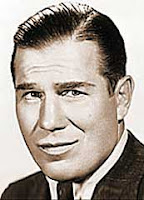 While they were never really big-budget productions, the Dr. Kildare films nevertheless had genuine audience appeal and contained some of MGM’s familiar character actors — Nat Pendleton as ambulance driver Joe Wayman, always ready with a monkey wrench to help “Doc Kildare” out of a jam, and Marie Blake as Sally the hospital switchboard operator. Other actors in the MGM stable who had already established careers — Sara Haden, Gene Lockhart, Robert Young — also made appearances.
While they were never really big-budget productions, the Dr. Kildare films nevertheless had genuine audience appeal and contained some of MGM’s familiar character actors — Nat Pendleton as ambulance driver Joe Wayman, always ready with a monkey wrench to help “Doc Kildare” out of a jam, and Marie Blake as Sally the hospital switchboard operator. Other actors in the MGM stable who had already established careers — Sara Haden, Gene Lockhart, Robert Young — also made appearances. The series allowed MGM to try out new talent in different roles without taking financial risks at the box office. Child actor Bonita Granville branched out from her role as Nancy Drew in The People vs. Dr. Kildare (1941), while vaudeville veteran Red Skelton also had two early film roles in the series (The People vs. Dr. Kildare and Dr. Kildare’s Wedding Day (1941). And just after she was billed as “The Sweater Girl” for being Andy Hardy’s date, an eighteen-year-old Lana Turner appeared in Calling Dr. Kildare (1939).
The series allowed MGM to try out new talent in different roles without taking financial risks at the box office. Child actor Bonita Granville branched out from her role as Nancy Drew in The People vs. Dr. Kildare (1941), while vaudeville veteran Red Skelton also had two early film roles in the series (The People vs. Dr. Kildare and Dr. Kildare’s Wedding Day (1941). And just after she was billed as “The Sweater Girl” for being Andy Hardy’s date, an eighteen-year-old Lana Turner appeared in Calling Dr. Kildare (1939). The films are generally under 90 minutes, with plots that are soap opera and part medical sleuthing. The exact location of Blair General Hospital is unspecified (though it is in “The City,” with “The Country” a short train ride away), but from the polished chrome handles of the glass double doors to Sally’s sleek reception desk, the building is pure art-deco — and so is the medical equipment. There are polished X-ray machines, amphitheater operating rooms containing huge chrome lights, and oxygen tanks with an inflatable rubber bag that demonstrates how well the patient on the operating table is breathing... or in dramatic moments, that the patient has died.
The films are generally under 90 minutes, with plots that are soap opera and part medical sleuthing. The exact location of Blair General Hospital is unspecified (though it is in “The City,” with “The Country” a short train ride away), but from the polished chrome handles of the glass double doors to Sally’s sleek reception desk, the building is pure art-deco — and so is the medical equipment. There are polished X-ray machines, amphitheater operating rooms containing huge chrome lights, and oxygen tanks with an inflatable rubber bag that demonstrates how well the patient on the operating table is breathing... or in dramatic moments, that the patient has died.  The doctors don’t wear lab coats, but plain-front, high-collared short sleeved jackets that are shockingly white (no one bleeds at Blair General) while the nurses are crisply starched from their caps to their stockings. And although Dr. Gillespie may rebuke a society matron for foolishly skipping a meal to maintain her figure, everyone smokes — in the hallways, in examination rooms, or right outside of surgery.
The doctors don’t wear lab coats, but plain-front, high-collared short sleeved jackets that are shockingly white (no one bleeds at Blair General) while the nurses are crisply starched from their caps to their stockings. And although Dr. Gillespie may rebuke a society matron for foolishly skipping a meal to maintain her figure, everyone smokes — in the hallways, in examination rooms, or right outside of surgery.These films presented cutting-edge of medicine of the time by tackling relevant issues, such as how social conditions and poverty affect health and how psychological trauma can have a physiological effect. They also presented as miracle cures things we now know to be unscientific, even dangerous.
 For example, in Dr. Kildare’s Strange Case (1940) the technique of injecting a patient with insulin until he went into shock or coma was used to cure a patient with a mysterious brain ailment. As Dr. Kildare describes it: “A terrific shock will sometimes drive a person crazy. An overdose of insulin apparently works just the reverse; the tremendous shock it gives seems to drive the crazed brain back to sanity.” Insulin shock therapy, although a last resort, was in fact considered a viable treatment for schizophrenia until the advent of antipsychotic drugs in the 1950s. Medical scenarios such as these, though admittedly given a Hollywood touch, provide an interesting perspective on the history of medicine. (For more information on this topic, Primary Sources: Insulin Coma Therapy describes the history of this treatment and how it was used on Dr. John Nash, the mathematician features in the 2001 film, A Beautiful Mind.)
For example, in Dr. Kildare’s Strange Case (1940) the technique of injecting a patient with insulin until he went into shock or coma was used to cure a patient with a mysterious brain ailment. As Dr. Kildare describes it: “A terrific shock will sometimes drive a person crazy. An overdose of insulin apparently works just the reverse; the tremendous shock it gives seems to drive the crazed brain back to sanity.” Insulin shock therapy, although a last resort, was in fact considered a viable treatment for schizophrenia until the advent of antipsychotic drugs in the 1950s. Medical scenarios such as these, though admittedly given a Hollywood touch, provide an interesting perspective on the history of medicine. (For more information on this topic, Primary Sources: Insulin Coma Therapy describes the history of this treatment and how it was used on Dr. John Nash, the mathematician features in the 2001 film, A Beautiful Mind.) MGM made a total of nine Dr. Kildare films between 1938 and 1941, and Lew Ayres’ gentle yet determined demeanor made the films quite popular. However, with the coming of World War II, Ayres (perhaps haunted by his role in All Quiet on the Western Front) registered as a conscientious objector. An unusual stance at that time, his decision was not popular with movie audiences or with Louis B. Mayer; Ayres’ films were picketed and his contract dropped.
MGM made a total of nine Dr. Kildare films between 1938 and 1941, and Lew Ayres’ gentle yet determined demeanor made the films quite popular. However, with the coming of World War II, Ayres (perhaps haunted by his role in All Quiet on the Western Front) registered as a conscientious objector. An unusual stance at that time, his decision was not popular with movie audiences or with Louis B. Mayer; Ayres’ films were picketed and his contract dropped.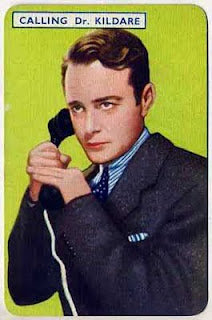 Up until then the Army had no rules or procedures for people willing to serve yet unwilling to kill in combat; Ayres’ request for a non-combat position set a precedent that allowed other COs flexibility in choosing how to fulfill their military obligations. Ayres eventually served in South Pacific field hospitals with the Medical Corps for three and a half years and earned three battle stars.
Up until then the Army had no rules or procedures for people willing to serve yet unwilling to kill in combat; Ayres’ request for a non-combat position set a precedent that allowed other COs flexibility in choosing how to fulfill their military obligations. Ayres eventually served in South Pacific field hospitals with the Medical Corps for three and a half years and earned three battle stars. Ayres earned his only Academy Award nomination in 1949 for another medical role — that of Dr. Robert Richardson in Johnny Belinda. Though audiences eventually forgave him this CO status, Ayres’ career was never quite the same after the war. (Lew Ayres: The Road Less Traveled over at TCM’s Movie Morlocks is a great piece for further reading.)
Calling Dr. Gillespie!
 Still, MGM was never a studio to let a good franchise go. Scriptwriters turned the focus to Barrymore’s character, and in 1942 there was Calling Dr. Gillespie, featuring all the same players plus a young Donna Reed. Later that year there was Dr. Gillespie’s New Assistant featuring another up-and-coming star MGM hoped to launch – Van Johnson. Johnson had been in other films, but up to this point his roles were uncredited or minor.
Still, MGM was never a studio to let a good franchise go. Scriptwriters turned the focus to Barrymore’s character, and in 1942 there was Calling Dr. Gillespie, featuring all the same players plus a young Donna Reed. Later that year there was Dr. Gillespie’s New Assistant featuring another up-and-coming star MGM hoped to launch – Van Johnson. Johnson had been in other films, but up to this point his roles were uncredited or minor.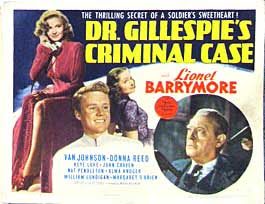 Both the studio and audiences liked what they saw of Dr. Randall ‘Red’ Adams, and in 1943 Johnson made Dr. Gillespie’s Criminal Case as well as his two breakout films, The Human Comedy and A Guy Named Joe. With his performance in Thirty Seconds Over Tokyo (1944) MGM knew they had a new star. Johnson was in the next two Dr. Gillespie pictures (Three Men in White and Between Two Women), and by 1945 his popularity had MGM casting him in major productions. Perhaps because of shooting schedules Johnson did not appear in the last Dr. Gillespie film, Dark Delusion (1947). Instead, the writers introduced a new character, Dr. Tommy Coalt, played by James Craig.
Both the studio and audiences liked what they saw of Dr. Randall ‘Red’ Adams, and in 1943 Johnson made Dr. Gillespie’s Criminal Case as well as his two breakout films, The Human Comedy and A Guy Named Joe. With his performance in Thirty Seconds Over Tokyo (1944) MGM knew they had a new star. Johnson was in the next two Dr. Gillespie pictures (Three Men in White and Between Two Women), and by 1945 his popularity had MGM casting him in major productions. Perhaps because of shooting schedules Johnson did not appear in the last Dr. Gillespie film, Dark Delusion (1947). Instead, the writers introduced a new character, Dr. Tommy Coalt, played by James Craig. The Dr. Gillespie films were a thematic continuation of the Dr. Kildare films, presenting dramatic medical scenarios such as using “narcosynthesis” (injecting someone with truth-serum) to diagnose a case. The films also served as the same type of vehicle for introducing starlets, but with changes in the studio system, the pictures did not have the same impact on their careers. Marilyn Maxwell (perhaps best known for her USO tours with Bob Hope) and Lucille Bremer made appearances, and Ava Gardner had an uncredited role in Calling Dr. Gillespie, resulting in a larger part in Three Men in White, but of the three women, only Gardner went on to larger films (and then only after being loaned out to a different studio). Unfortunately for audiences today, the six Dr. Gillespie films have not yet made it to DVD, but do show up from time to time on Turner Classic Movies.
The Dr. Gillespie films were a thematic continuation of the Dr. Kildare films, presenting dramatic medical scenarios such as using “narcosynthesis” (injecting someone with truth-serum) to diagnose a case. The films also served as the same type of vehicle for introducing starlets, but with changes in the studio system, the pictures did not have the same impact on their careers. Marilyn Maxwell (perhaps best known for her USO tours with Bob Hope) and Lucille Bremer made appearances, and Ava Gardner had an uncredited role in Calling Dr. Gillespie, resulting in a larger part in Three Men in White, but of the three women, only Gardner went on to larger films (and then only after being loaned out to a different studio). Unfortunately for audiences today, the six Dr. Gillespie films have not yet made it to DVD, but do show up from time to time on Turner Classic Movies. In some instances films that were popular when first released become so dated because of cultural views or technology that they become almost embarrassingly unwatchable. But it is precisely because the medical and scientific knowledge is dated that the Dr. Kildare films are so enjoyable today. Each contains some truly fun actors to watch, and each is a snapshot of medical practice in the early twentieth century. It is both interesting and gratifying to see just how far medical science has come in life — and in Hollywood.
In some instances films that were popular when first released become so dated because of cultural views or technology that they become almost embarrassingly unwatchable. But it is precisely because the medical and scientific knowledge is dated that the Dr. Kildare films are so enjoyable today. Each contains some truly fun actors to watch, and each is a snapshot of medical practice in the early twentieth century. It is both interesting and gratifying to see just how far medical science has come in life — and in Hollywood._____________
Lew Ayres was not the first to portray Dr. Kildare on the silver screen. Joel McCrea had that distinction in 1937 when he costarred with Barbara Stanwyck, but minus Dr. Gillespie, in a Universal hospital drama titled Internes Can’t Take Money,
Ayres and Lionel Barrymore reunited in 1949 for a series of syndicated radio programs called The Story of Dr. Kildare.
Sixty of these radio episodes are available for your discovery at Internet Archive. Check out the billboard on the right with episode titles like “Barbara Lane, Dope Addict,” “Dr. Carew’s Fat Wife,” “Glaucoma,” and “Marion Lewis, Teen Age Alcoholic.”
Television was a natural for the Dr. Kildare franchise, and Richard Chamberlain (as Kildare) and Raymond Massey (as Gillespie) graced Blair Hospital for 190 small screen episodes of Dr. Kildare during the 1960’s. Unfortunately, this series has not yet been made available on DVD -- an omission that must be amended, stat!
 The MGM Dr. Gillespie series is not available on DVD. Only two of the MGM Dr. Kildare’s are on DVD at this time: Dr. Kildare’s Strange Case is available for purchase at Movies Unlimited and The Secret of Dr. Kildare is at Amazon.com. Internes Can’t Take Money is available in VHS-only at Amazon.com. For those interested in checking out Dr. Kildare in print, Calling Dr. Kildare, the first novel in the series, can be purchased for a buck at Fantastic Fiction.
The MGM Dr. Gillespie series is not available on DVD. Only two of the MGM Dr. Kildare’s are on DVD at this time: Dr. Kildare’s Strange Case is available for purchase at Movies Unlimited and The Secret of Dr. Kildare is at Amazon.com. Internes Can’t Take Money is available in VHS-only at Amazon.com. For those interested in checking out Dr. Kildare in print, Calling Dr. Kildare, the first novel in the series, can be purchased for a buck at Fantastic Fiction. 


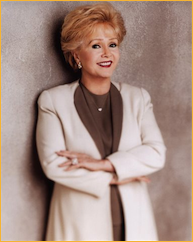


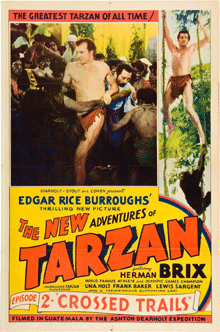
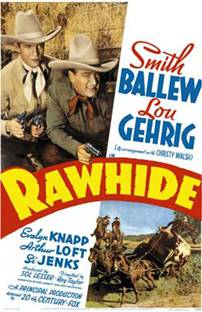
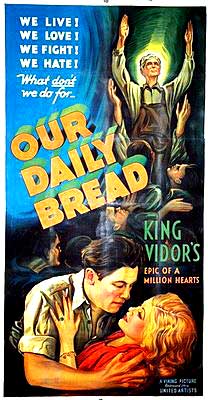


1 comment:
Where are doctor Gillespie & Doctor Kildare when you need them.....the tiered medical system we have today is unconscionable! Yes, we have come miles in technology, totally unreachable by the poor & what's left of the working class!
If your under the illusion that medical science is anything beyond the " PRACTICE" of medicine. The "experimentation", you are deluded. Anything beyond the common ailments becomes "wait & see". Or see a specialist!! The specialists for the most part (from finger nail to brain specialist).The rich get the gold treatment, multitreatment doctor/specialist conferences. Then a multidisciplinary "Plan of care" including the newest technologies. All the while the poor,struggling, fighting to get the most basic & most obviously needed tests. They are left with "no answers" & suffering. Dying of ailments such as dental infections, & undiagnosed treatable conditions. If they dare to continue fighting, they (or/and their loved ones) have their "medical records" "marked for life" in code. The doctors use the telephone to pass on the fact that they are "troublemakers", crazy, slanting the conversation of what should be reported as "facts" "in a caring & concerned manner becomes a joke & a "power play" in what protects the doctors reputation & the system we have come to live with. Though every patient has "rights", they are unenforceable. Disagree or debate one doctor & your ruined in the medical system forever. If you dare get a lawyer (unaffordable for most) their insurance team of highly paid & highly connected lawyers make sure your case never sees the light of day. The doctor notates your instability, etc.in the record & any doctor you seek in the future avoids you like a plague...the over confident doctor's BLEED the systems for their piece of the pie & then reject you & your issues. The kind & knowledgeable doctors are kind enough to treat the symptoms. But even they grow impatient & fearful of the system (insurance, government, lawyers, & other doctors) ostrasizing them. Their livelihood & reputation being ruined. Because only "within the system" can they survive, no matter their talent, & expertise, & ability (which has no bearing on their ability to practice medicine!) Only cooperation in the
club, the sticking together in word & deed. The rationalization is "sacrifice of the one, for the many!" I must sacrifice this one patient for the many others I can help in the future!! Low income woman, mostly single, as well as patients with any type of mental illness (including depression). Low income single African Americans. The only remedy I see is the help from wealthy celebrities, ESPESCIALLY minority celebrities. To bring this out in the open as THE TRUTH it is. This horrifying state of affairs will probably never be seen, or allowed to be heard. But know IT IS TRUTH!! Calling Dr. Gillespie & Dr. Kildare.....
Post a Comment